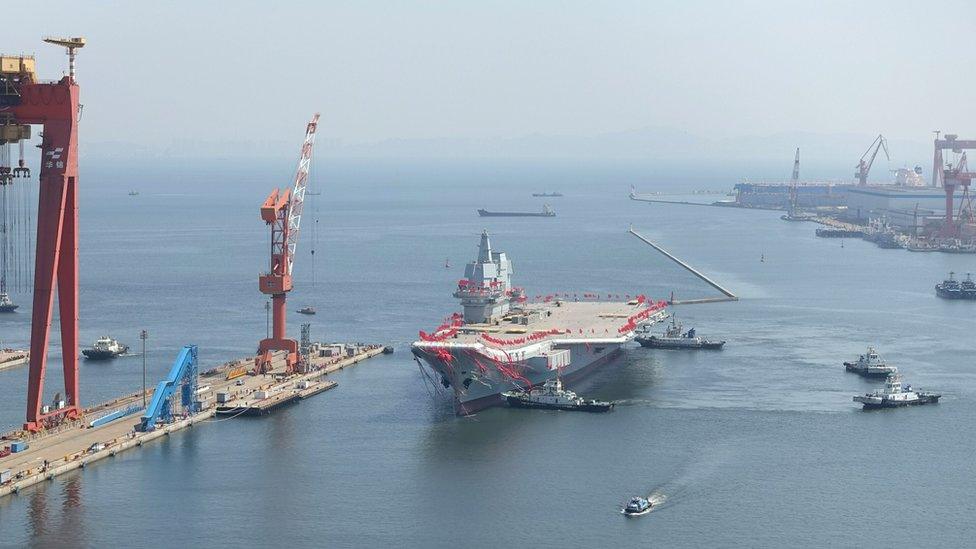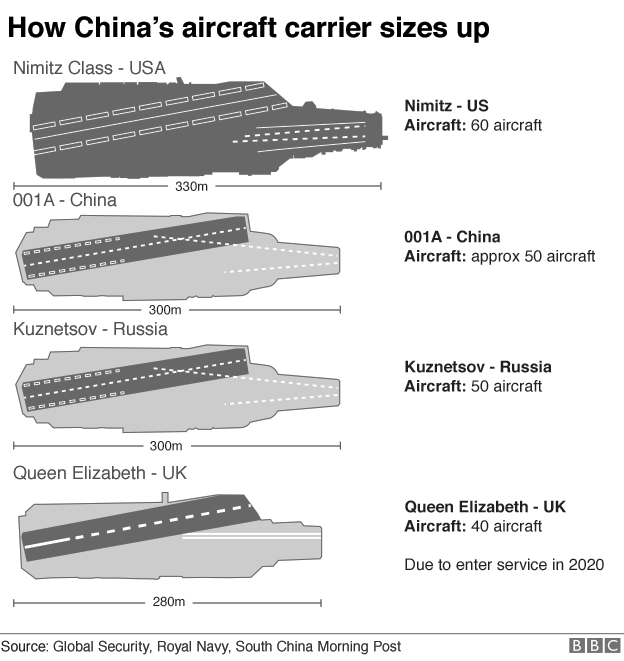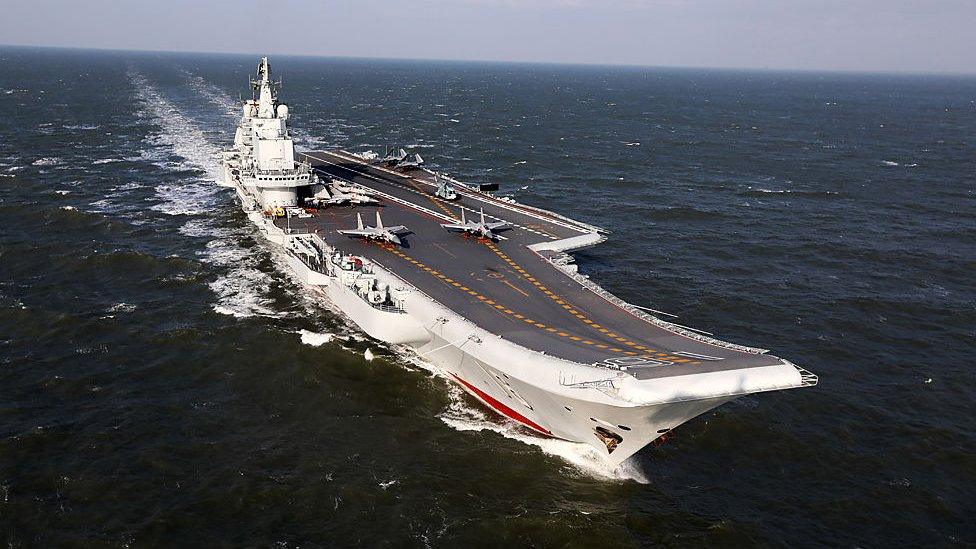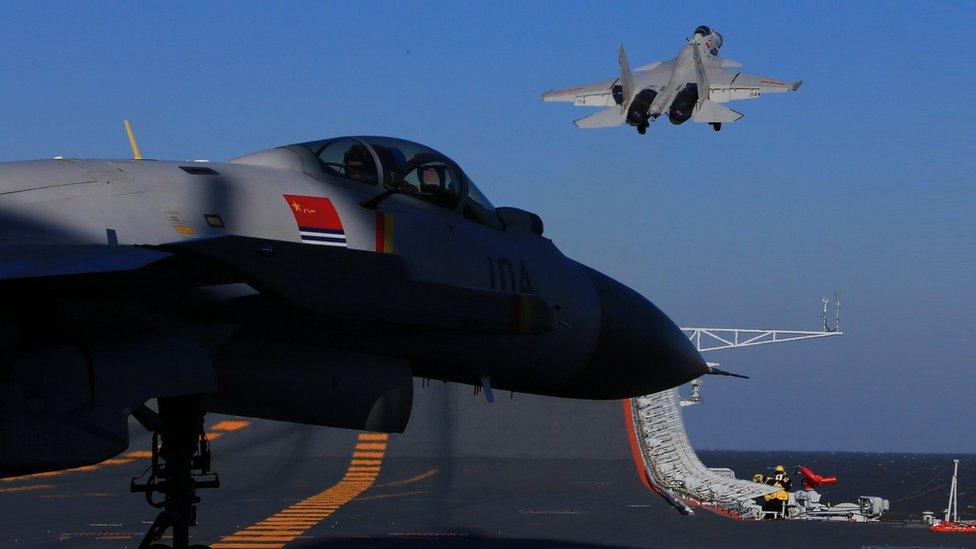China launches aircraft carrier, boosting military presence
- Published
What will China use their new aircraft carrier for?
China has launched a new aircraft carrier in the latest sign of its growing military strength.
It is the country's second aircraft carrier, after the Liaoning, and the first to be made domestically.
The as-yet unnamed ship was transferred into the water in the north-eastern port of Dalian, state media said. It will reportedly be operational by 2020.
It comes amid heated rhetoric between the US and North Korea and ongoing tensions in the South China Sea.

The new aircraft carrier is China's second, and the first to be domestically-built
China has had only one operational aircraft carrier, the Liaoning, which it bought from Ukraine and refitted.
The US has deployed warships and a submarine to the Korean peninsula, prompting an angry reaction from North Korea. China has urged calm.


A big step for Beijing, by the BBC's China Correspondent Stephen McDonell
The sight of a bottle of champagne hitting the bow of a new Chinese-built aircraft carrier will worry many.
Western military intelligence will be poring over the television footage. For them it's not emotional: cold calculations are being made.
They see a not quite finished vessel, a few years from full service, partly based on Soviet-era design.
It's technologically inferior to the ten aircraft carriers being used by the United States Navy - but there's no doubt that it's a big step for China.
China's aircraft carrier programme is a state secret, but it's hard to imagine this country being satisfied with two of them.
The US says all options are on the table to remove North Korea's nuclear weapons - and it is using the USS Carl Vinson battle group to press the point.
That's the kind of power that China wants - and that's why we haven't seen the last Chinese aircraft carrier rolling off the production line in the Dalian shipyard.

The new carrier is touted as a significant upgrade from the Liaoning, which was built more than 25 years ago and is a refurbished ship from the days of the Soviet Union.
It has been seen by some analysts as a kind of training vessel in preparation for the new carrier, our correspondent says.

China's first aircraft carrier, the Liaoning, is a refurbished Soviet ship
But China has been modernising its armed forces recently as its economy expands.
In March, it announced it would increase its military budget by about 7% this year - the second year in a row that increases have been less than 10%, after nearly 20 years of larger increases.
China's defence budget remains smaller than that of the US, however.
While China's military spending will be about 1.3% of the country's projected GDP in 2017, the US spends roughly 3% of its economic output on the military - and the US economy is larger, so the dollar value difference is enormous.
US President Donald Trump has also proposed a 10% increase in the military budget.
Chinese state news agency Xinhua said work had started on China's latest aircraft carrier in 2013.
The launch was attended by the vice-president of China's central military commission, Fan Changlong.
Officials smashed a bottle of champagne on the ship's hull as "magnificent patriotic songs" played on loudspeakers and nearby ships sounded their horns in celebration, reported Xinhua.
The defence ministry said previously that it would carry China's J-15 aircraft along with other planes, and that it would use conventional rather than nuclear propulsion.

Timeline of recent tensions
11 April: North Korea says it will defend itself "by powerful force of arms" after US orders a navy strike group to move towards the Korean peninsula
15 April: North Korea puts on a huge military parade - complete with missiles - to mark 105th birthday of the nation's founding president, Kim Il-sung
16 April: North Korea conducts a rocket test, but it fails
17 April: Senior North Korean official tells the BBC the country will continue to test missiles "weekly" and the US vice-president warns North Korea not to "test" Donald Trump
23 April: North Korea says it is "ready to sink" the US aircraft carrier

- Published4 March 2017

- Published16 December 2016

- Published21 April 2017